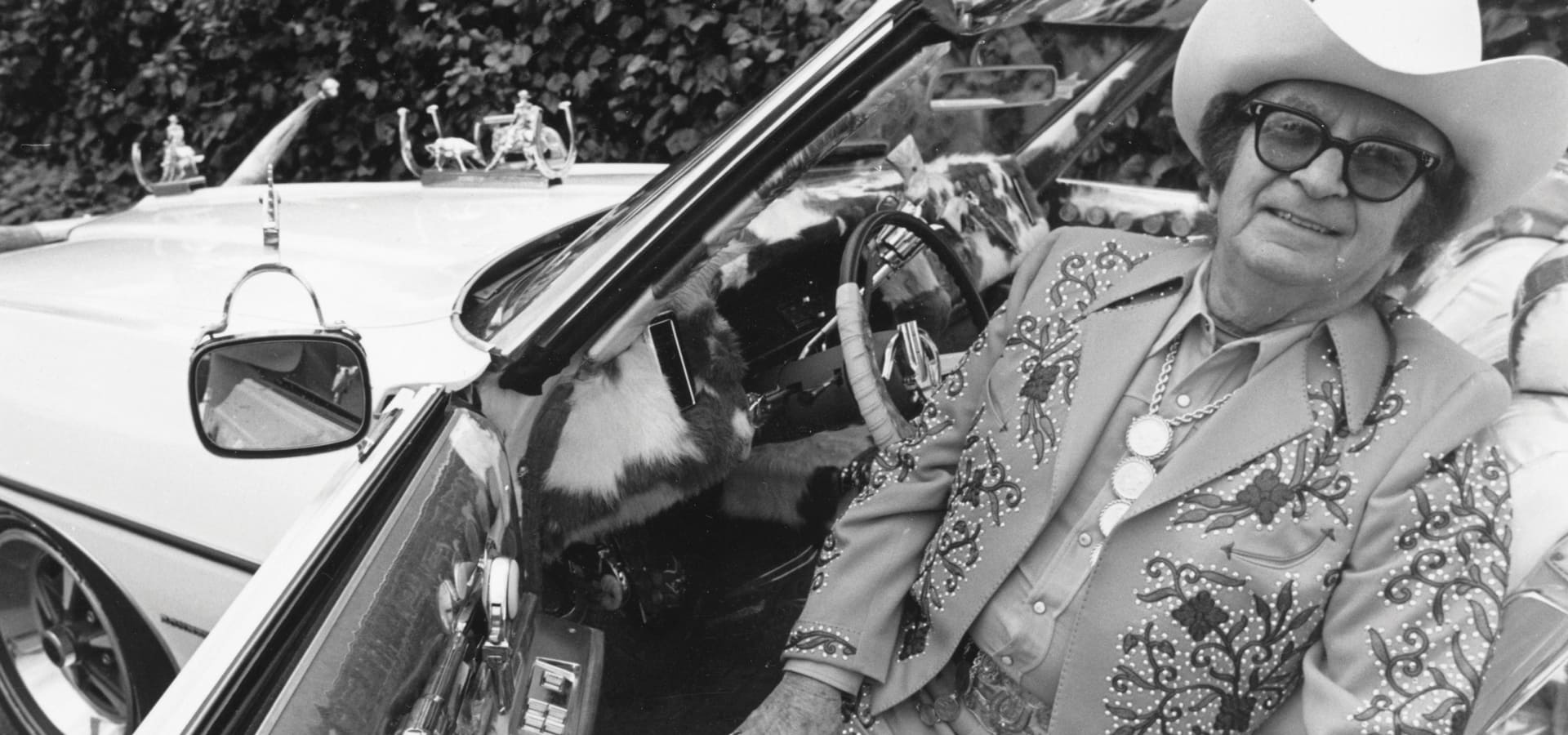It’s a story right out of a country-western song. A little tailor’s apprentice from Kiev, born in 1902 as Nuta Kotlyarenko, grows up idolizing the American cowboys he sees on the silver screen. Given the name Nudie Cohn upon arriving in America at Ellis Island, he becomes a costuming pioneer, one that writer, LA historian, and family friend Julie Ann Ream calls “the P.T. Barnum of western wear.”
His bedazzled and embroidered suits, boots and cowboy hats were worn by the country-western megastars of the day, including John Wayne, Hank Williams, Roy Rogers and Dale Evans. In later years, he even made the $10,000 gold lamé suit worn by Elvis Presley on the cover of his album 50,000,000 Elvis Fans Can’t Be Wrong.
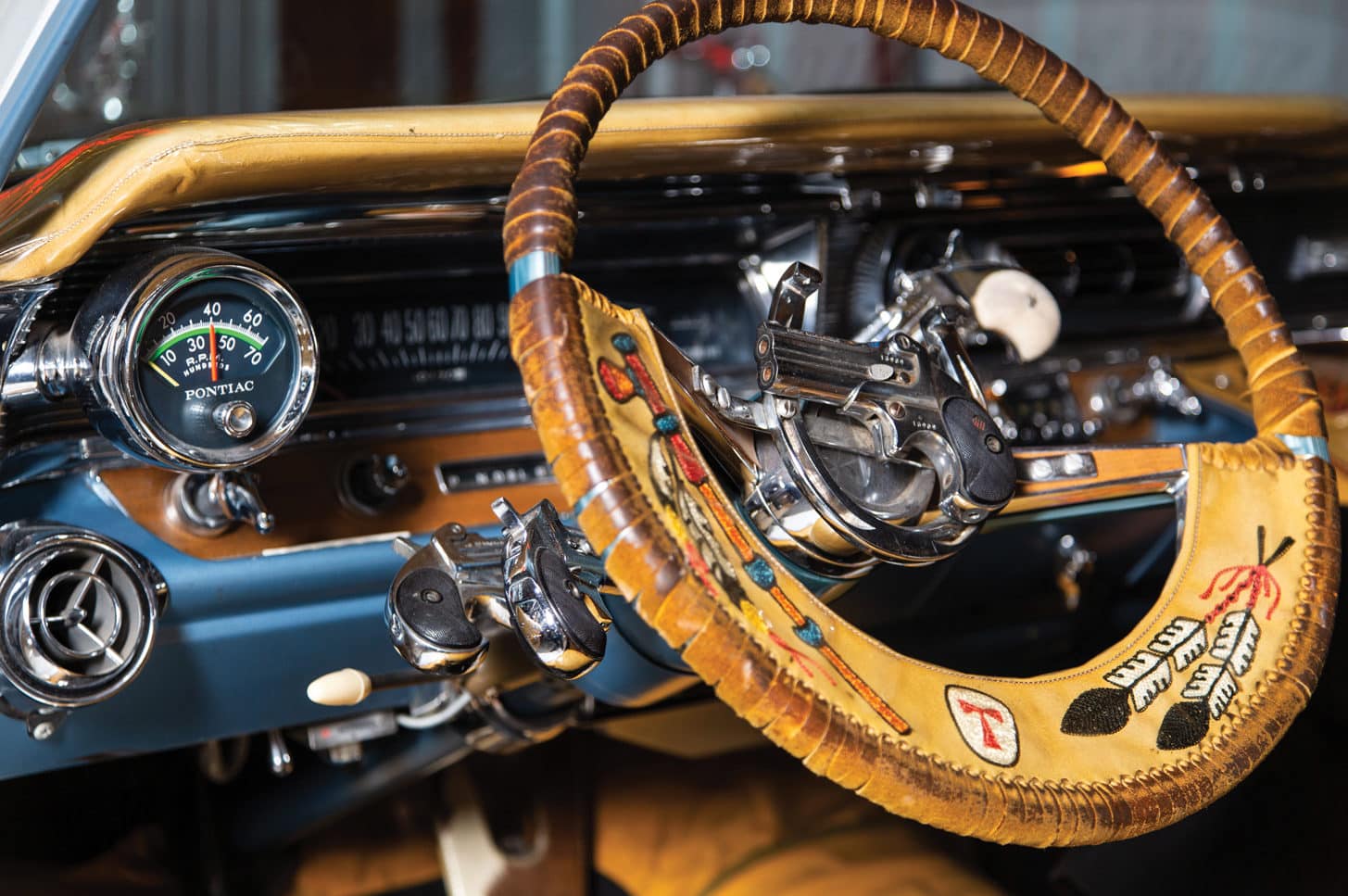
WHEEL OF FORTUNE
The designer tricked out a Pontiac Bonneville for his daughter. The car is now on display at the Valley Relics Museum in Van Nuys.
But at Nudie’s Rodeo Tailor in North Hollywood, the star was the proprietor himself. “He was a self-made personality and he was flashy in his dress,” Julie Ann remembers. “He was friendly but caustic, buoyant and fun, and he made his presence known with the way he looked, the way he was.”
“It’s better to be looked over than to be overlooked!”
Nudie started out as a young tailor’s apprentice in New York, early on displaying a flair of his own while creating extravagant G-strings for burlesque dancers.
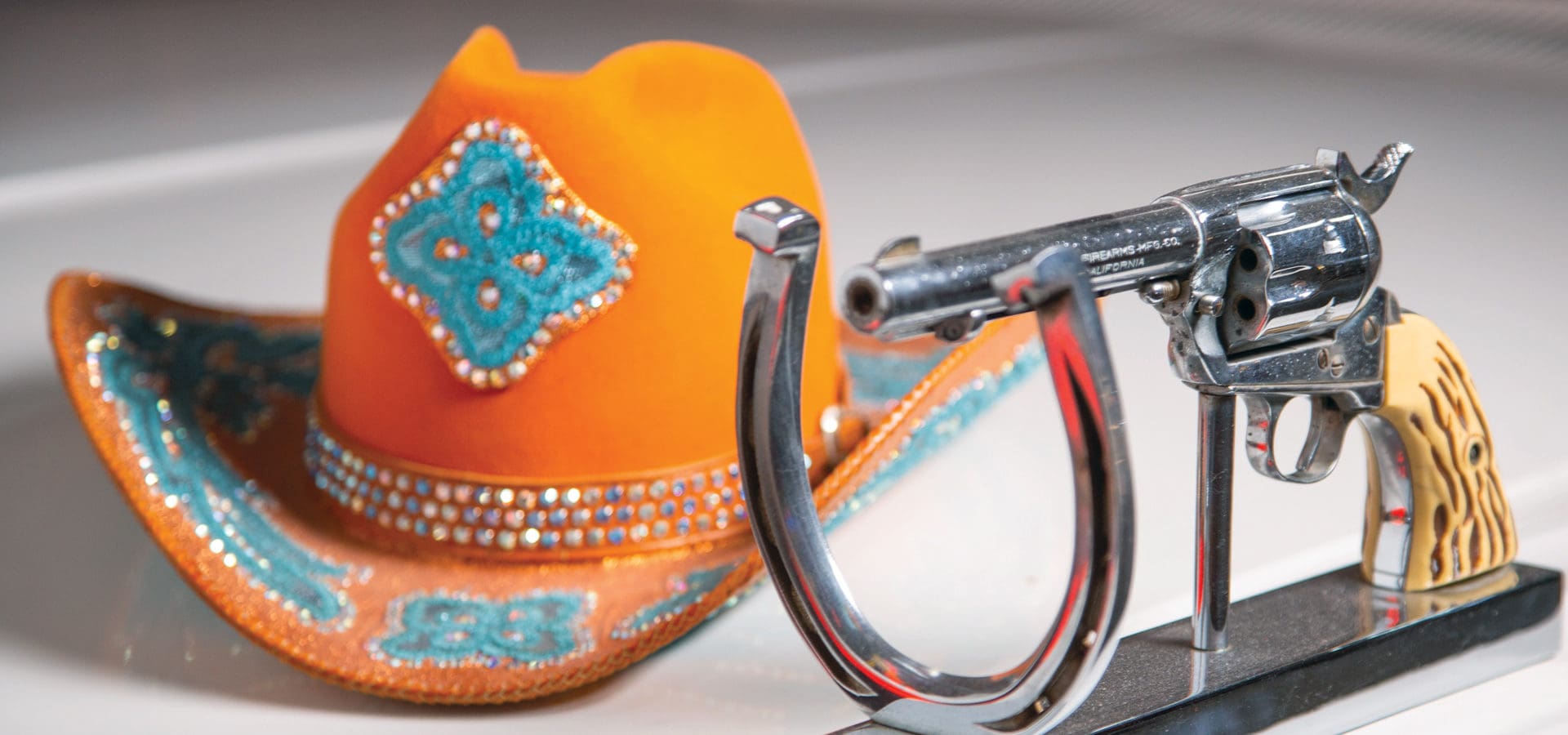
When he and his wife, Bobbie, moved to LA in the 1940s he turned his attention to western suits. The couple launched Nudie’s Rodeo Tailors from their garage and within a decade they had enough business to open a shop in North Hollywood.
A big break came in the 1950s when western actor and singer Roy Rogers wore a spectacular Nudie suit for a show at Madison Square Garden. Rogers apparently wanted something to make him stand out—and he got it. The outfit Nudie created had rhinestones on the fringe that adorned the front of the shirt as well as down the front of his pants.
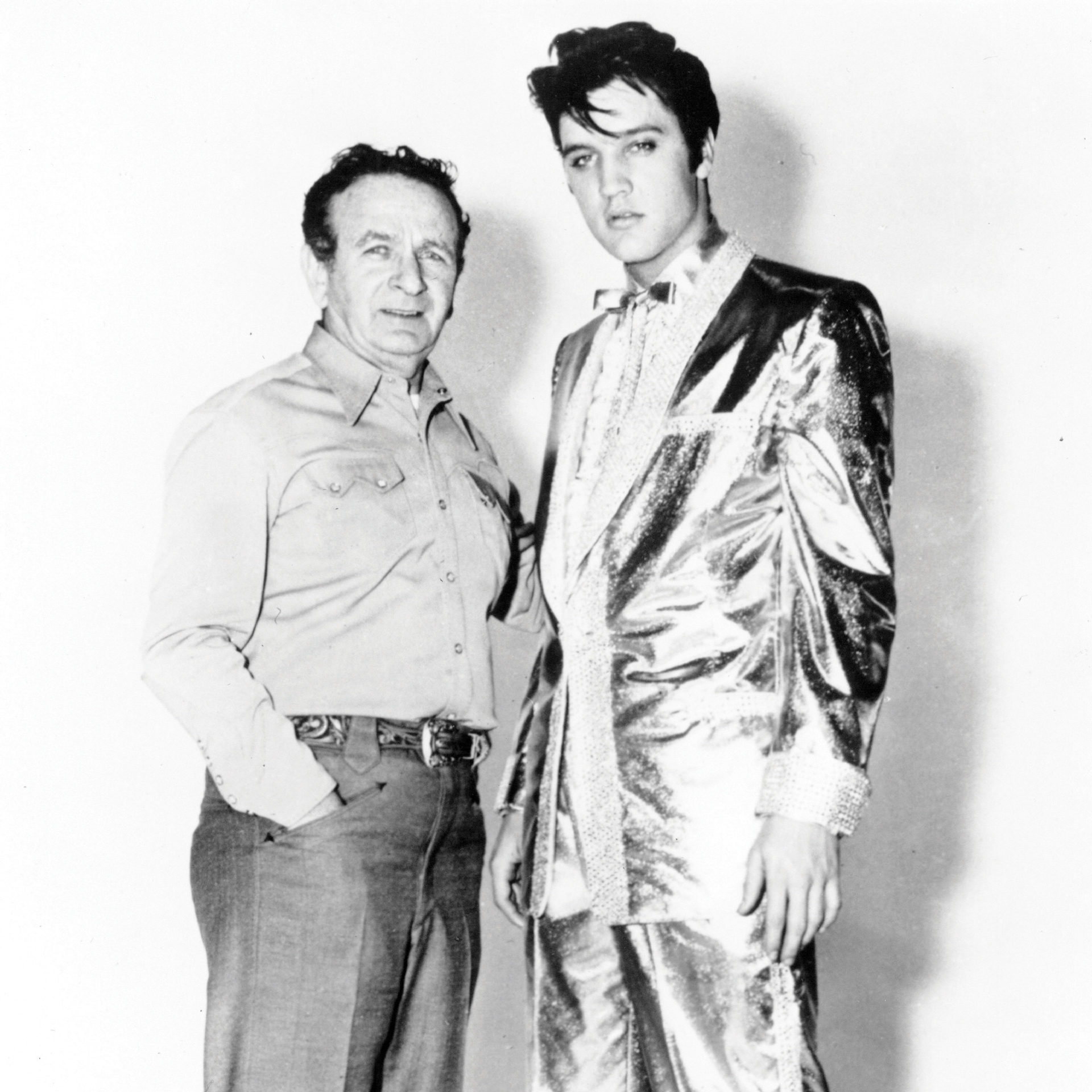
Nudie’s maxim—“It’s better to be looked over than to be overlooked!”—was evident in all his custom creations, with the goal that they always be visible from the front row all the way to the cheap seats. “They’re the most flamboyant clothes you’ll ever see,” Julie Ann says, adding that country music singer Porter Wagoner “had a complete wagon train on his!”
For many stars, a fitting at Nudie’s in NoHo could become an all-day jam session, with Nudie playing his custom mandolin. Such was the case with singers Tex Williams and Glen Campbell. “Actors like Robert Mitchum would go to his shop to shop and they would end up just shooting the bull and drinking coffee and talking,” the historian recalls. “It was a meeting place, a gathering place.”
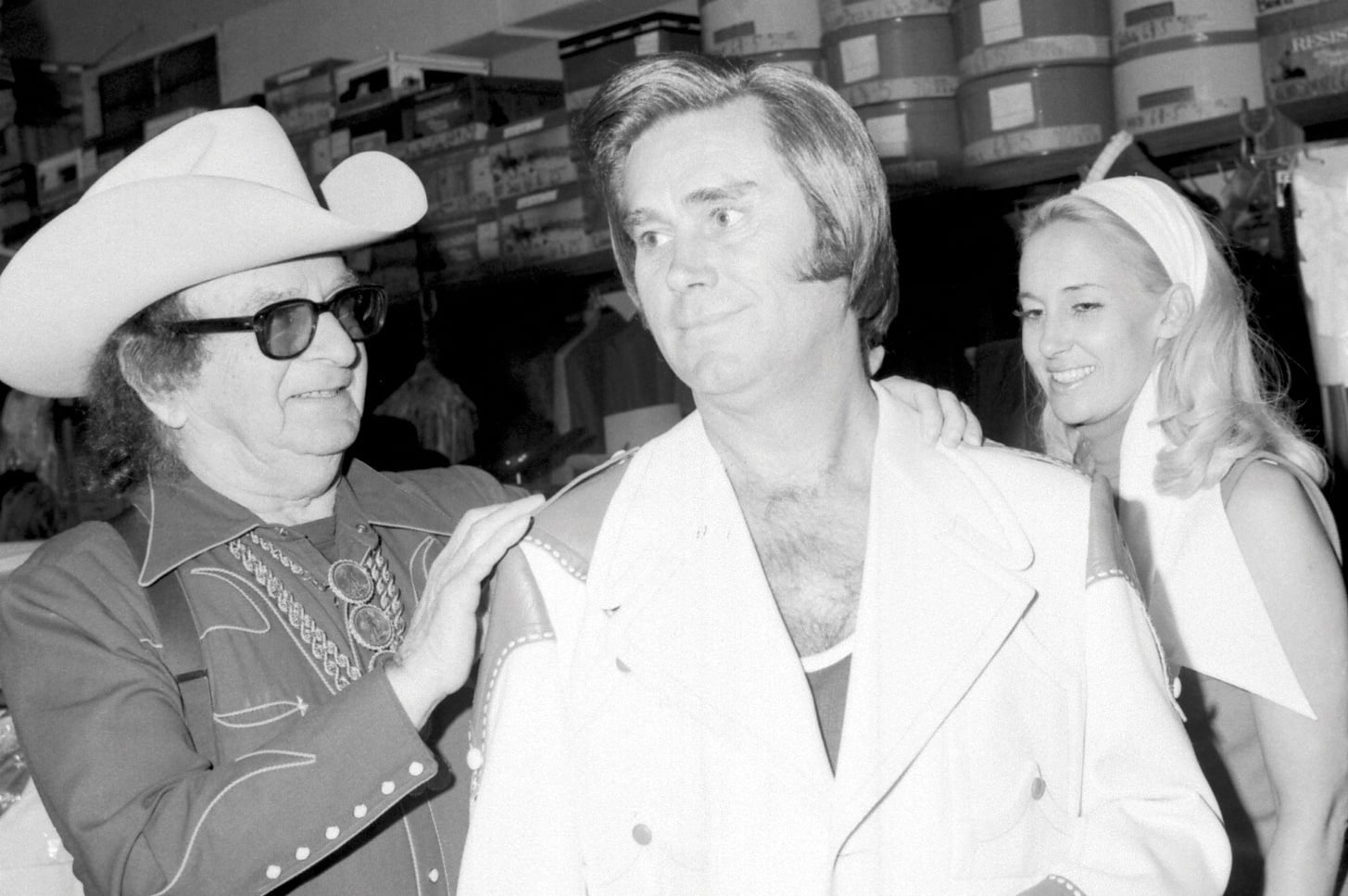
SHOP TALK
Nudie with singers George Jones and Tammy Wynette at his North Hollywood headquarters.
During the late ’60s and ’70s, Nudie was embraced by a whole new generation of artists that extended beyond country music and Western films. Clients included some of the most popular recording artists of the day, including Gram Parsons, Dolly Parton, Linda Ronstadt, Cher and Robert Plant. “My costumes used to be called corny,” Nudie told Rolling Stone in 1969. “Now they call us mod. I don’t care. Country music has took over rock and roll. Doesn’t matter to me who buys clothes. Whatever does the best.”
Overseeing it all was Nudie’s wife, Bobbie. “She was the business head,” Julie Ann explains. “Nudie was not a businessman. If it weren’t for Bobbie, I don’t think they would’ve made a dime. He was the personality and she was the businesswoman—she ran things.”
Nudie Cohn died in 1984, and his store closed 10 years later. But his influence lives on, as evident in rapper Post Malone’s red-carpet wardrobe—like the Nudie-inspired rhinestone-encrusted pink suit he wore at the Grammys in February. One of Nudie’s favorite quotes seems to have also kept its currency: “Real men wear rhinestones.”
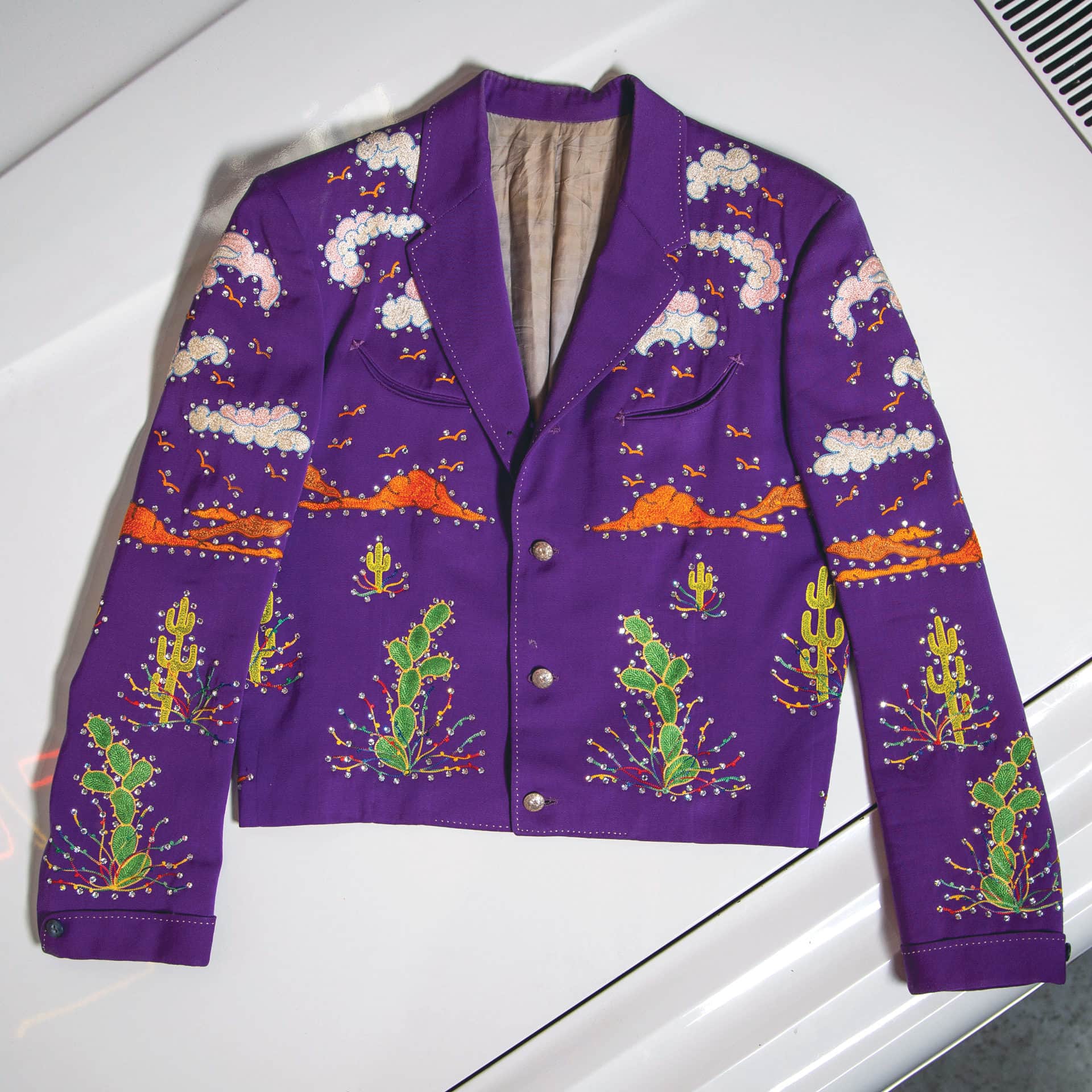
Join the Valley Community






